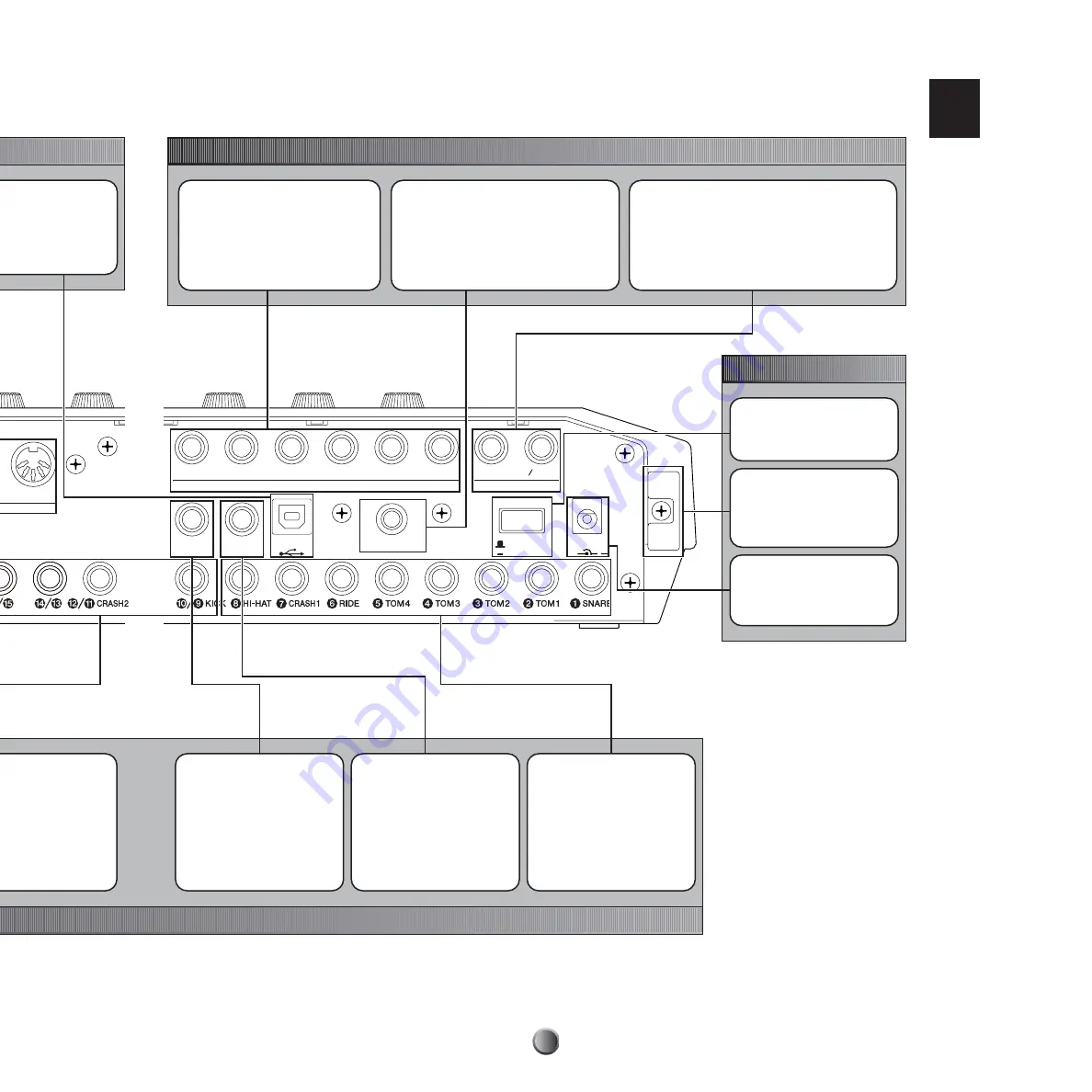
Panel Map
13
IN
OUTPUT
L MONO
R
INDIVIDUAL OUTPUT
1
2
3
5
4
6
HI-HAT
CONTROL
FOOT SW
DC IN 12V
STANDBY
ON
+
USB
DIGITAL OUT
Audio Outputs
INDIVIDUAL OUTPUT 1 to 6 jacks
Each of these jacks can separately output
any specified drum voice (page 53) or click
sound (page 81) —useful for sending each
instrument signal to an external mixer for live
performance or recording session.
OUTPUT L/MONO and R jacks
Outputs line level stereo-mixed audio signals from the
DTXTREME IIs to other audio equipment (amp, mixer, etc.).
Use a pair of shielded cables with a 1/4-inch phone plug
on one or both ends. Connect those cables to both
L/MONO and R jacks if you want to output in stereo.
Connect only to the L/MONO jack if you want to output
in mono.
Power
STANDBY/ON switch
Turns the DTXTREME IIs on or off.
Cable hook
Fix the DC power cord of the
supplied AC power adapter here to
ensure the plug will not come
loose.
DC IN jack
Connect the supplied AC power
adapter (PA-5C or PA-5D) here.
1
SNARE to
8
HI-HAT
Each of these trigger input jacks
is designed to accept two
separate trigger signals from a
stereo (dual) pad connected
using a stereo cable (a shielded
cable with a stereo phone plug at
each end). If you connect a mono
pad, only the head-generated
trigger signal can be used.
FOOT SW jack
Connect a foot switch (Yamaha
FC4 or FC5) here. You can assign
various functions to the foot switch
(page 46).
HI-HAT CONTROL jack
Connect a foot controller for
hi-hats (Yamaha HH series) here.
You can also use this controller as
a MIDI controller (page 45).
DIGITAL OUTPUT jack
Connect to a coaxial digital input (S/P DIF) on
an external audio device. This jack digitally
outputs stereo audio signals identical to those
from the OUTPUT L/MONO and R jacks, but not
affected with the MAIN OUT
%
volume slider
setting (the digital jack always outputs audio
signals at a maximum volume level).




























